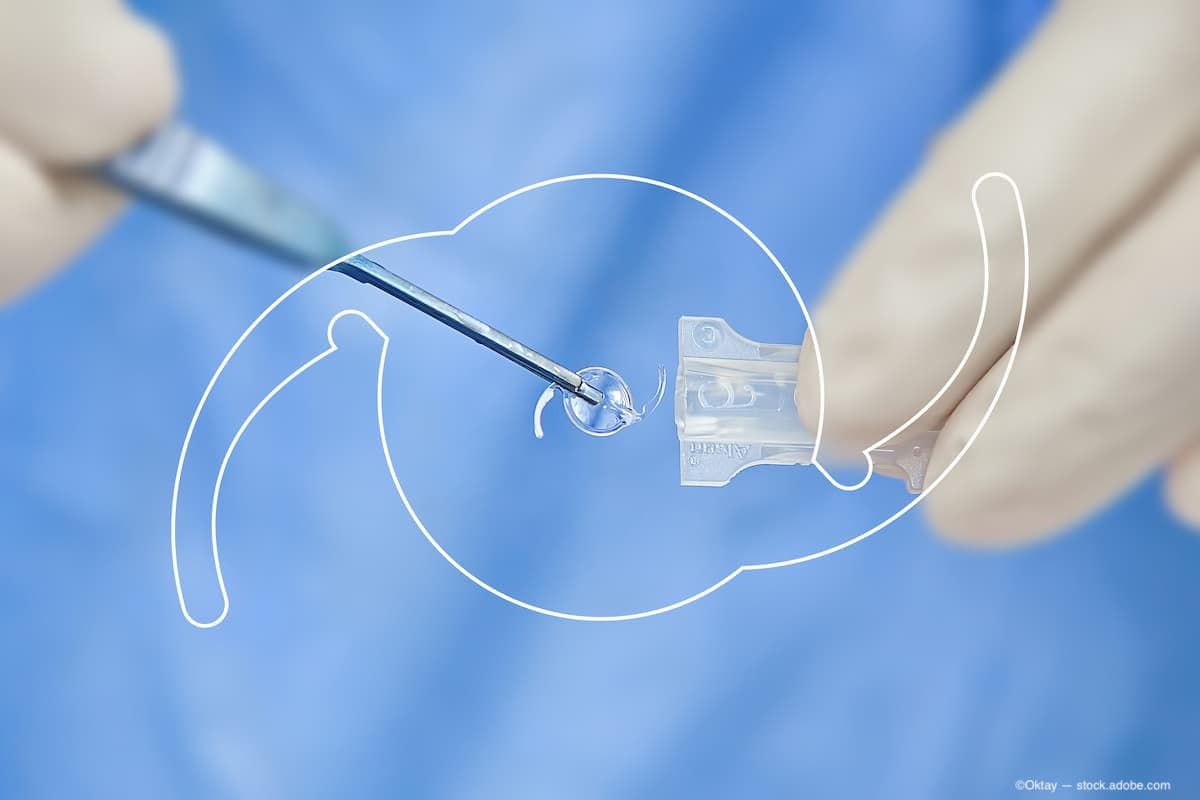News
Article
Test driving IOLs before implantation
Author(s):
GreenMan app provides patients an opportunity to test drive various IOL options before cataract surgery via virtual and augmented reality.
A patient using the GreenMan app. (Image provided by Michael Greenwood)

Reviewed by Michael Greenwood, MD
The visual outcomes achieved with implantation of intraocular lenses (IOLs) during cataract surgery are not yet a perfect science, but a big step is being taken toward perfection with the use of virtual reality. Michael Greenwood, MD, described how patients in his practice can “test drive” the visual outcomes achieved with advanced technology IOLs before patients undergo cataract surgery.
Greenwood, from Vance Thompson Vision, Fargo, ND, reported on the usefulness of this technology at the Hawaiian Eye meeting in Maui.
This method of patient education is important when the numbers of cataract surgeries performed annually in the US, ie, 4.5 million, are considered.
“Better educated patients equals happier patients,” he commented.
The preliminary data indicate that advanced technology IOLs are being used increasingly, and while almost half of patients are reportedly willing to trade up to an advanced technology IOL, only about 18% of patients actually take that step, according to data from Alcon.
Attributes of virtual reality
There are several positives associated with the use of virtual reality to help patients in decision-making regarding their choices of IOLs. Such as being able to see what vision will be like following IOL implantation, is doctor-independent, efficient, upgradable, immersive, memorable, can simulate absolute presbyopia correction, and is customizable.
Virtual and augmented reality
These applications are already in use in Ophthalmology in the following scenarios.
- visual field testing, in which regular tests can be undertaken in the patient’s come, thus providing convenience and data accuracy;
- intraocular pressure (IOP) measurements performed at home facilitate regular IOP monitoring;
- amblyopia can be managed via interactive vision therapy sessions;
- interactive modules on cataract pathophysiology, surgical procedures, and recovery provide patient education;
- diagnosis and management of ocular pathology can be managed through remove assessment of visual field, and fundus and slit-lamp photographs;
- and patients with hearing or visual impairment have access to customizable visual settings to facilitate care.
GreenMan clinical data
The GreenMan app provides patients an opportunity to test drive various IOL options before cataract surgery in multiple immersive environments including an apartment and driving a car. They can do this in normal and low light conditions and can experience monofocal, toric, and multifocal IOLs and will soon have monovision capabilities, Greenwood explained.
He reported the results of a randomized study conducted at 2 offices in the Vance Thompson Vision practice (Fargo and Omaha, NE). The 233 patients were randomized to either the virtual reality group and wore a virtual reality headset and experienced GreenMan simulation or to a control group, the members of which did not wear a headset and received verbal education about IOLs.
The results showed that 29 of 112 control patients chose an advanced technology IOL in contrast to 69 of 121 patients in the virtual reality group who chose an advanced technology IOL.
Three months after the study, validation data have been collected to date from 41 patients, and of those 81% recalled wearing the headset. The vast majority of patients, 86%, reported that the virtual reality experience represented their current vision following IOL implantation.
Of the 14% who said that the virtual reality experience did not represent their current vision, 3 patients said that their vision was better than what the headset showed, 1 said the halos and glare were worse than with the headset, and 1 just said no.
Based on their experience, 93% said that they would recommend the virtual reality experience to friends and family, Greenwood reported.
The take-home messages of this study is that virtual reality allows patients to test drive outcomes before cataract surgery and better educate patients. The preliminary data showed increased acceptance of advanced technology IOLs as a result of the virtual reality experience and that virtual reality was representative of the final visual outcomes.
Newsletter
Don’t miss out—get Ophthalmology Times updates on the latest clinical advancements and expert interviews, straight to your inbox.





